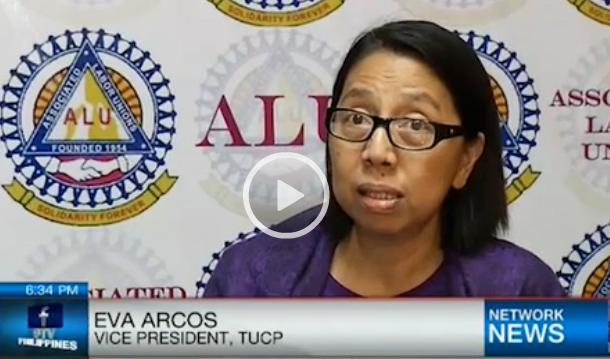| Cotabato Governor Emmylou “Lala” J. Taliño-Mendoza |
AMAS, Kidapawan City (Sep 23) – Three covered court projects, two of which were initiated by the Trade Union Congress of the Philippines (TUCP) and one funded by the Provincial Government of Cotabato were handed over to village officials of Magatos and Pisan in the Municipality of Kabacan and Sikitan in Kidapawan City respectively on Sep. 20, 2014.
No less than Cotabato Governor Emmylou “Lala” J. Taliño-Mendoza led the turnover of the projects in Barangay Magatos and Pisan in a simple but well- attended ceremonies with the local officials and their constituents.
Rex Pedtaman, Chairman of Barangay Magatos along with other village officials and hundreds of residents witnessed the turnover highlighted by the ceremonial ribbon-cutting led by the governor.
He was particularly enthusiastic that the village is a recipient of a sensible project which will benefit by many of his constituents.
“The village of Magatos is blessed with a project sponsored by the TUCP and was implemented by the Provincial Government through Gov. Taliño-Mendoza” he said adding that the project is a proof that the advocacy of the “Serbisyong Totoo” of the governor goes beyond words and promises.
Kabacan Municipal Mayor Herlo Guzman and Municipal Vice - Mayor Myra Bade were present at the activity and called upon the residents of Magatos to make the most out of the project that will include village meetings, programs and other purposes.
Barangay Magatos has around 6,000 residents mostly are engaged in farming and buy-and-sell as source of income.
After the village of Magatos, a same covered court project was also handed to the village officials and residents of Pisan, Kabacan.
It was an exciting day for many especially for the teachers and students of Pisan and so with the local officials as they now have a decent venue to conduct meetings and various activities.
“Everyone here in the village is elated with the project which the people are really thankful of”, Nestor G. Ranay, Chairperson of Barangay Pisan said during the turnover ceremony of the covered court.
Aside from Gov. Taliño-Mendoza, Mayor Guzman and Vice Mayor Bade also graced the activity.
The governor emphasized that her administration aims to put up important infrastructure projects in every barangay to provide people with the basic services they deserve from the provincial government.
She also told the officials of Barangay Pisan of her plan to put up an additional span for the covered court which the residents mostly appreciated.
The last of Gov. Talino-Mendoza’s schedule for the day was a turnover of another covered court project, this time in Barangay Sikitan, Kidapawan City funded by the Provincial Government of Cotabato.
This time, the governor was accompanied by Cotabato 2nd District Board Member Cris Cadungon and City Councilor Judith Navarra.
Barangay Sikitan Chairman Zacarias dela Cruz welcomed them along with his fellow village officials and proceeded with the turnover ceremony.
The Provincial Government of Cotabato through the Provincial Engineer’s Office (PEO) continues to implement its infrastructure projects this year in many more villages in the different parts of the province. (JIMMY STA. CRUZ with reports from ROVILLE ANN SOTTO/Photos by SIDNEY NANINI/PGO Media Center)

